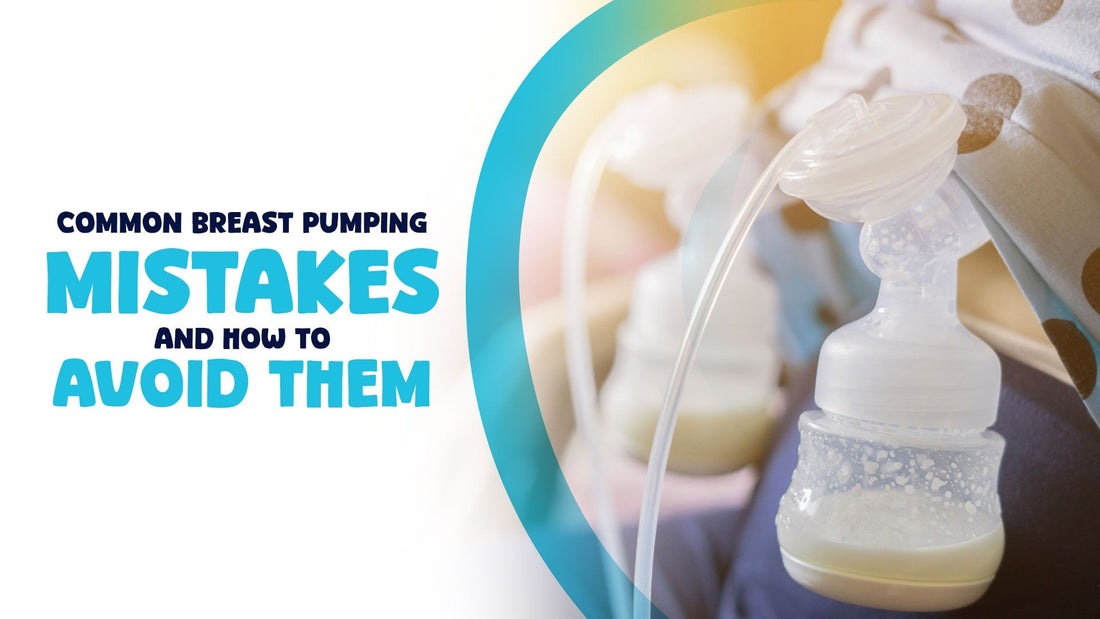
Common Breast Pumping Mistakes and How to Avoid Them
Share
Pumping can be a lifesaver for breastfeeding moms—whether you’re building a freezer stash, heading back to work, or simply sharing feeding duties with your partner. But many new moms unknowingly make common pumping mistakes that can lower milk supply, cause discomfort, or even lead to infections.
In this blog, we’ll walk you through the top breast pumping mistakes and how to avoid them so you can pump effectively, comfortably, and confidently.
1. Using the Wrong Flange Size
One of the most overlooked issues is using the incorrect flange size. The flange is the part that fits over your nipple—and if it doesn’t fit right, it can cause pain, reduced output, and nipple damage.
How to Avoid:
- Measure your nipple size (not including the areola).
- Don’t settle for the default size that comes with your pump.
- Your nipple should move freely inside the tunnel without rubbing against the sides or pulling in too much areola.
2. Pumping Too Infrequently or Too Often
Inconsistent pumping can throw off your milk supply. Pumping too little may reduce production, while too much can lead to sore nipples or oversupply.
How to Avoid:
- Stick to a schedule that mimics your baby’s feeding (typically every 2–3 hours for newborns).
- Adjust based on your baby's growth spurts and your body’s signals.
3. Pumping for Too Long
Longer sessions don’t always mean more milk. In fact, they can cause nipple trauma and unnecessary exhaustion.
How to Avoid:
- Keep sessions to about 15–20 minutes per breast.
- For double pumping, 15–20 minutes total is usually sufficient.
4. Using Incorrect Suction Settings
More suction doesn’t equal more milk—it can actually cause pain and reduce letdown response.
How to Avoid:
- Start at a low suction level and increase gradually to a comfortable setting.
- Begin with massage mode to trigger letdown, then switch to expression mode.
5. Not Replacing Pump Parts Regularly
Old or damaged parts can weaken suction, decrease output, and introduce hygiene risks.
How to Avoid:
- Follow your pump’s manual for part replacement timelines.
- Regularly replace valves, membranes, and tubing—especially if you see wear or milk backflow.
6. Skipping Night Pumping Too Early
Your milk-making hormones are highest at night. Skipping those sessions too early can impact supply.
How to Avoid:
- Try to include one session between 1am–5am, especially in the first 12 weeks.
- Use a wearable pump like MUMYFY S1 Pro for quiet, hands-free night pumping.
7. Ignoring Pump Hygiene
Not cleaning your pump thoroughly can lead to bacteria buildup—and possibly infections like mastitis.
How to Avoid:
- Wash parts in warm soapy water after every session or use a steam sterilizer.
- Always store milk in clean, sterile containers and refrigerate/freeze promptly.
8. Comparing Your Milk Output to Others
Every mom’s body is unique. Comparison can cause stress and discouragement.
How to Avoid:
- Focus on your baby’s health—weight gain and wet diapers are the real indicators.
- Track your output over time rather than session-by-session.
Final Thoughts
Pumping doesn’t have to be painful or overwhelming. By avoiding these common mistakes and finding what works for you, you can make pumping a seamless part of your breastfeeding journey.
At MUMYFY, we’re here to make it easier. Our pumps are quiet, wearable, and mom-tested for comfort and efficiency—so you can pump smarter, not harder.
Explore the MUMYFY Collection Today and upgrade your pumping experience.
